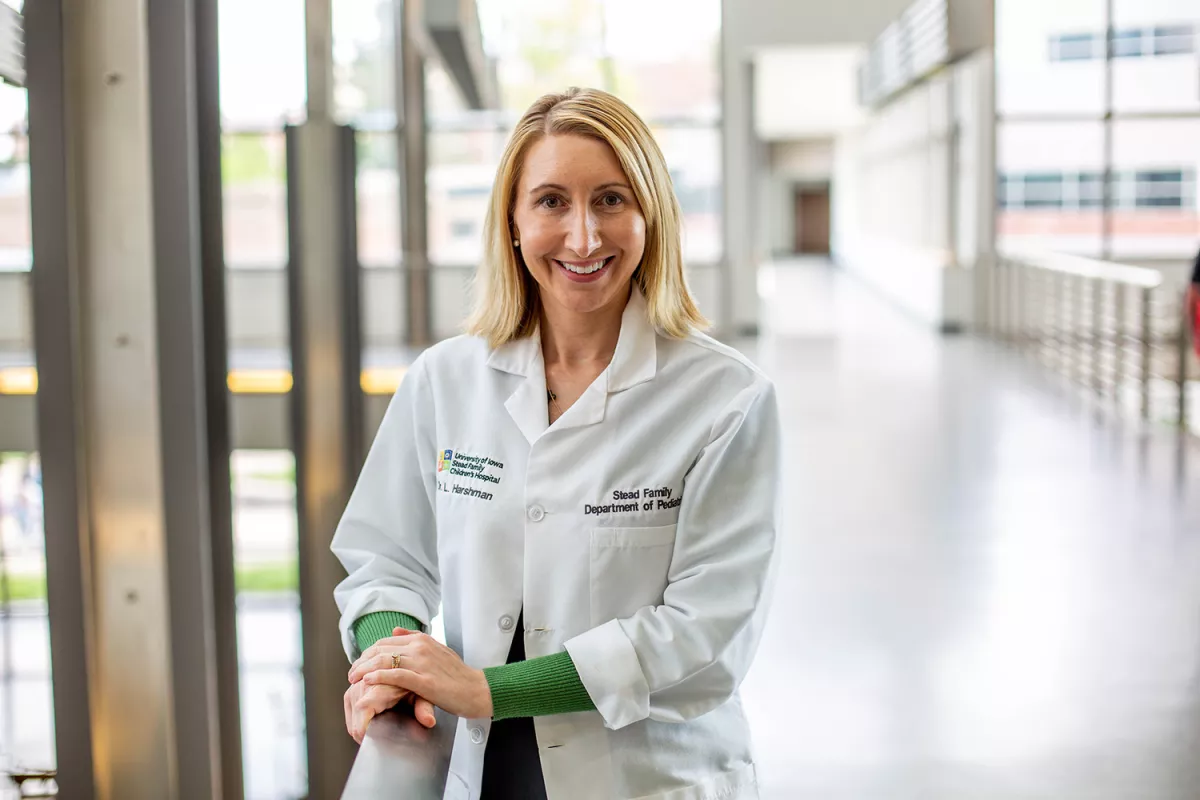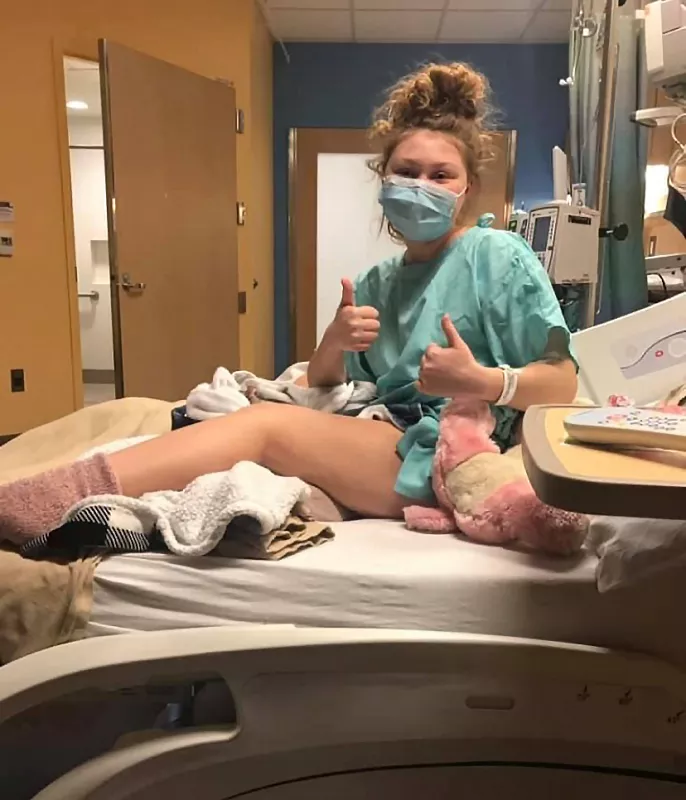Telehealth helps patients meet with care team without leaving home

Patients with non-critical needs can now meet with members of their care team without sacrificing care via telehealth. Though it gained popularity through the pandemic, the use of telehealth will continue in some capacity post-pandemic.
Trisha Moore wasn’t concerned about the sometimes weekly 2.5-hour drive from her home in Russell, Iowa to University of Iowa Stead Family Children’s Hospital in Iowa City, home of the state’s only pediatric kidney transplant program and where her daughter, Autumn, 15, receives specialized care for weak kidneys and other health concerns.
But when the COVID-19 pandemic reached Iowa, Trisha started worrying about making the drive with her immunocompromised daughter. She knew Autumn would be safe at the hospital but leaving the safety net of home was a concern, particularly if they needed to stop along the way.
Then she learned the hospital had started offering telehealth visits for patients who didn’t have to be on-site.
“It’s been a godsend,” says Trisha. “I don’t have to take my daughter anywhere for her appointments, she can sit at her computer and talk to her doctor and it’s just like they’re together.”
Lyndsay Harshman, MD, a member of Autumn’s care team and medical director of the pediatric kidney transplant program at UI Stead Family Children’s Hospital, says telehealth has widened accessibility for patients and their families.
“When we were in the early stages of the pandemic, we started thinking about seeing patients in the clinic and how that was going to work,” she says. “We started spacing patient visits out if able so the less-acute kids didn’t have to come in until we had a better idea of what we were dealing with in terms of the pandemic. And that actually gave us time to jump on board with the rollout of telehealth capabilities here in April and May of 2020.”

What it meant for Harshman and other clinicians was that they could see more stable patients virtually via telehealth and “make sure that patients with more acute needs, or the higher medical needs, could be seen in the clinic but even then have some visits buffered via telehealth.”
Trisha says she Autumn’s care via telehealth is just as high-quality as in-person visits.
By mid-summer 2020, Harshman says, the telehealth visits became more than a convenience for many families – they were the primary point of contact.
“Throughout the summer and into the fall, as families really felt the tension of COVID, we were really trying to meet families where they were and be able to say, ‘Yes, we can see you by video, we can review labs, and if there’s something else we need to do we can bring you in if we have to,’” she says. “We were able to be really flexible knowing the risk for children that are immunosuppressed.”
She says telehealth has also relieved much of the stress for families like Autumn’s, who live a few hours away, or like that of Ethan Marshall, 17, who lives in Grand Island, Nebraska – who make a 7.5-hour drive from their home to the hospital.
“Sometimes we’d leave at 2 or 3 in the morning,” says Melanie Marshall, Ethan’s mom. “We have a family of six kids, so we kind of made it into a vacation. We never looked at it as a stressful doctor’s visit because we always found fun things to do before and after. And it’s worth the trip – the doctors are so amazing. They’re just so loving and personal – when he’s there he’s Ethan Marshall, he’s not a number.”
Though Ethan typically only visits UI Stead Family Children’s a few times a year for follow-up care related to a kidney transplant he had in 2007, the COVID-19 pandemic still created a concern for his family.
Melanie was grateful for the telehealth option.
“It was amazing. It not only took the need to make the long trip away but the consistency and care never faltered. They were steadfast, just like they had been when we were in the office,” she says.
Telehealth is also making a major impact in the clinic. Harshman says there are about 10 pediatric kidney transplants performed at the hospital each year, as well as 70 patients who are post-transplant and needing care, and another 10-12 who are pre-transplant. Many of these patients are now utilizing telehealth.
“It’s having a big impact on the kids and their families, but also on the clinic,” she says. “If we’re able to start buffering their visits early on with telehealth or doing acute visits, the travel time and the amount of time they are actually in the clinic is dramatically reduced, and yet we’re still able to see them for the same amount of time.”
The use of telehealth has increased significantly throughout the pandemic at UI Hospitals & Clinics and was particularly key in keeping potential COVID patients isolated from other patients in clinics. It will continue to be available under certain circumstances after the pandemic.
Harshman appreciates having the option of providing care via telehealth.
“I actually feel like I can provide really high-quality, responsive, quick care to my patients through telehealth,” Harshman says. “Prior to telehealth, if a patient living 6-8 hours away called and was concerned about something, I’d feel a high amount of anxiety about not being able to see them right away. Now with telehealth, I can see them and, if they get in to see a local physician, I can speak with them, too.”